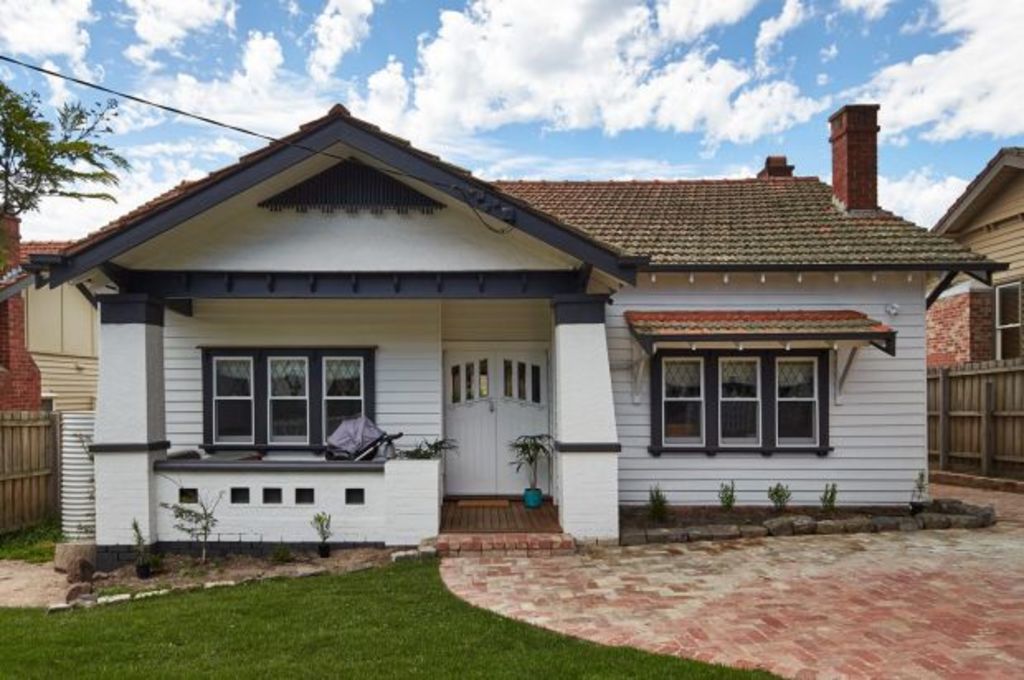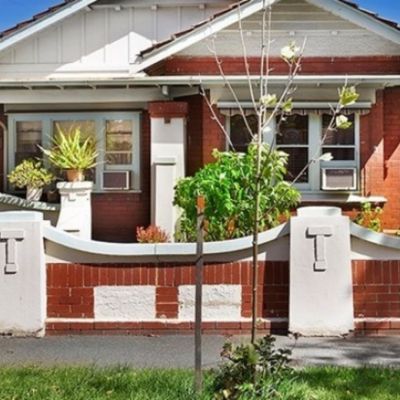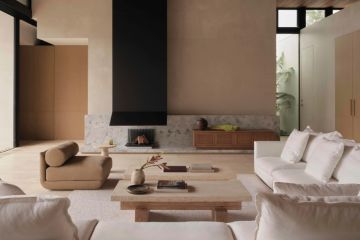The allure of the California bungalow never gets tired

The interwar house type that is so beloved of the market that it has a brand-name-sounding nickname, “Cal bungs” have an allure that never gets tired.
By themselves, these heavy-set and traditionally single-storey brick or weatherboard homes with their all-covering hip and gable tiled roofs, can lift marginal suburbs into zones of hot desirability.
Take the case of a three-bedroom, narrow weatherboard California bungalow on the 330-square-metre block in the Melbourne northern suburb of Preston. When five bidders jostled at auction late last month, they pushed it to $923,000, “a huge price for the suburb”, according to Jude Kattan of Love Real Estate Preston. “We expected $850,000-plus”.
With a similar house in neighbouring and closer-in Thornbury being worth $1.2 million, the “suddenly skyrocketing prices” of interwar Preston now show it up as the next hipster suburb on the rise.
Deserving of the sentiment that “they don’t build them like that any more”, Australia’s interwar residential was, generally, craftsman built with well-manufactured Australian bricks and hardwood timbers, used in framing and feature joinery.
The 1915-40 period covers a raft of styles that, apart from ye-olde Tudoresque, were influenced mainly by a design focus on the new world of the United States.
California bungalows were derivative of an America’s west coast typology. So was the terracotta-roofed and barley twist-columned “Spanish Mission” or “Hollywood” styles so marvellously exemplified by the fantastic ‘‘Boomerang” in Elizabeth Bay, Sydney.
Streamline Moderne, which hints at the age of luxury liner, or long, lean locomotives, was an Art Deco variation, and it appeared not only in mansions such as the Nicholas Aspro founder’s Burnham Beeches at Sherbrooke outside Melbourne, but in the novelty introduction of flats that came so late to Australia.

Showing how far Preston has come up in the world and how popular the interwar era housing is, this narrow Cal bung achieved $900.000-plus at auction recently. Photo: Love Real Estate

Inside the sold property of 27 South Street, Preston VIC. Photo: Love Real Estate
Interwar marked the beginnings of stacked residential in inner and harbourside Sydney, and in Melbourne’s South Yarra, Prahran and St Kilda, where the councils relented to allow multi-storey buildings on blocks formerly occupied by mega Victorian mansions.
Clinker brick houses made of the rough, chunky and apparently overcooked bricks, were also part of the mix, and were again a heavy-boned type that displayed interior architraves, cornices and doors that retained their timber coloration. These seemingly intractable clinkers are being tackled by inventive young architects finding clever ways to make them feel more contemporary.
Because they are just so well constructed and usually occupy such good-sized blocks in the infill or roomier “garden suburbs” that began to overtake the paddocks beyond the Queen Anne and Federation suburbs in the major capitals, interwar housing is invariably, and whatever the style, a good buy because they are such good places in which to bring up children.
Dib Chidiac, of Raine and Horne Concord, one of Sydney’s interwar ‘burbs, says the 1920s-style houses are especially sought by young families “because they’re the houses they [the parents] grew up in”. On a busy Concord road, he quotes the kick-off price for a classic three-bedroom Cal bung at $1.4 million.
On one of the most sought-after streets of Concord West, 63 The Drive, a lovely 1920 double-fronted brick property, which will be auctioned on Saturday, July 23, has, he says, “been really well looked after” and, being on a street with an ever-pending buyer wait list, has a estimated start price of $2 million.

A classic of type, this Concord West property to be auctioned in late July carries a price estimate of $2 million-plus. Photo: Raine and Horne

63 The Drive , Concord West NSW is up for auction on Saturday July 23.
Not much need be done to a house that has retained its charm for almost a century. But what happens if you do buy a Cal bung that needs upgrading, especially as the unrenovated models invariably have the best rooms at the front, no matter what the orientation, and working rooms as a hierarchy of rear facilities where sometimes the toilet is accessed via the laundry?
Nick James, of Melbourne’s Architecture Architecture, shows how deftly an updating programme can be effected in a marvellous extension to a type-perfect Cal bung that from the street betrays nothing of the complementary new work.
Originally, James tells, the clients “wanted the extension to look exactly like the front”. Instead, in the project he named “hip and gable”, he gave them a brilliant “reinterpretation” of similar elements.
The “hit and miss” brick blade wall is a variation on the theme of Cal bung verandah piers. And he says, also references original brick chimneys. The semi-internalised back patio – he calls it “a porch”, is like the old covered front verandahs, “and here it extends the living room”.
Translucent cladding over the porch reappears in the kitchen/living room roof as a kited skylight that introduces north light into what, in old school bungs, can often be dark-core rooms.
In the interwar Cal bungs, James tells, “there is always a generosity of spaces that flow nicely into each other so that all spaces have some sort of relationship with each other”.
Through the new “black threshold portal” where one enters what internally feels like a wholly modern house with a very interesting roof, the concept “of the clearly different spaces that still have visual connection is all there”.
The new is clearly different but the work has been about carefully preserving “the innate charm of these houses”. According to Architecture Architecture, the whole intent was not to destroy, rather, “to pay homage to these long-serving California bungalows”.

Inside a classic three-bedroom Cal bung property. Photo: Architecture Architecture

Back exterior of a classic three-bedroom Cal bung property. Photo: Architecture Architecture
We recommend
We thought you might like
States
Capital Cities
Capital Cities - Rentals
Popular Areas
Allhomes
More








